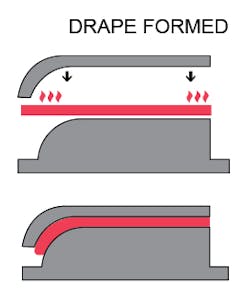Methods of Thermoforming
Thermoforming is the manufacturing process of heating and shaping thermoplastic sheet to produce uniform and consistent parts with high finish specifications and tight tolerances, similar to what is expected from injection-molded parts. Fine details including undercuts are achieved using the economical tooling available with thermoforming.
Five primary forming processes are used for thermoplastics. Each process has distinct benefits depending on the size and detail of the part being formed.

Advantages of Thermoforming
- Thermoforming methods allow efficient production of complex parts and part design flexibility and precision.
- Thermoformed parts guarantee tight tolerances, seamless edges, tight corners, precise dimensions.
- Tool design offers virtually unlimited texture and finish options.
- Single sided molds allow for quick modifications at little cost and the ability to produce parts that fit together.
- Low machine times lead to lower lead times, and low tooling cost.
- Wide range of materials available including sustainable choices can be recycled or re-used.
Vacuum Forming
In the vacuum-forming process, a thermoplastic sheet is heated and pulled against a male or female mold, by pulling a vacuum between the mold and the sheet. This process allows:
<br>
- Complex Shapes
- Fine surface detail
- Tight tolerances
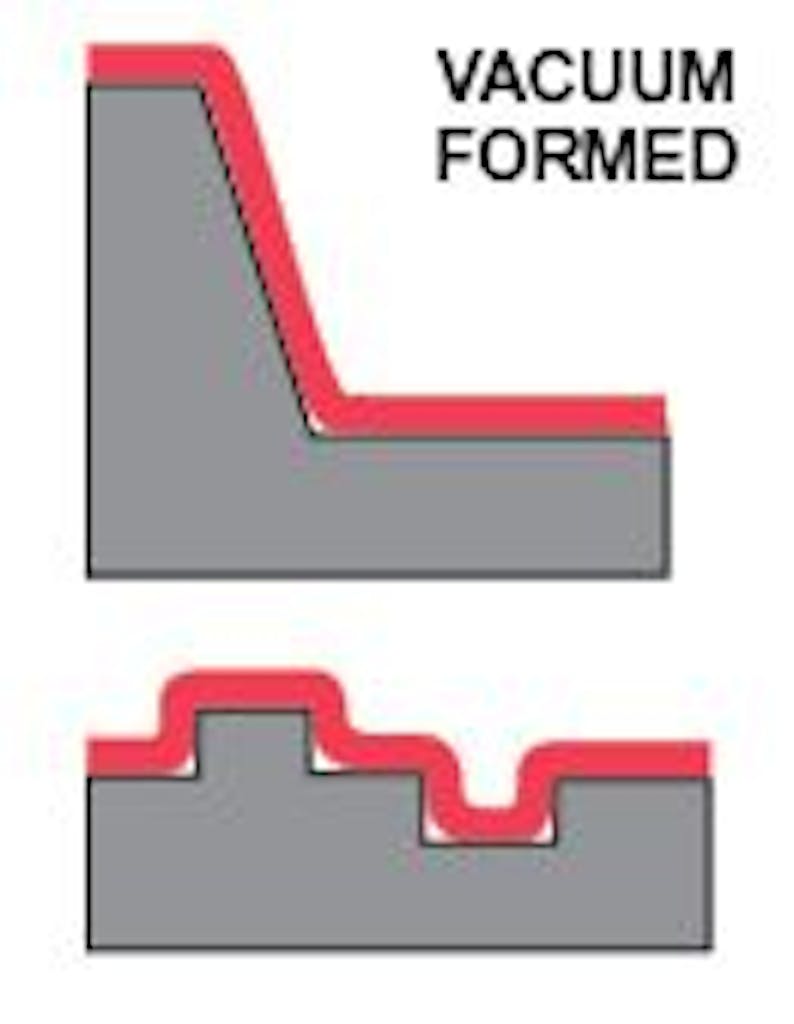
Pressure Forming
In the pressure-forming process, a thermoplastic sheet is heated and pressed against the inside of a female mold. This method uses pressure from above the sheet and pulling a vacuum between the sheet and the mold. This process allows:
<br>
- Sharp details
- Undercuts
- Tight tolerances
- In-mold texture
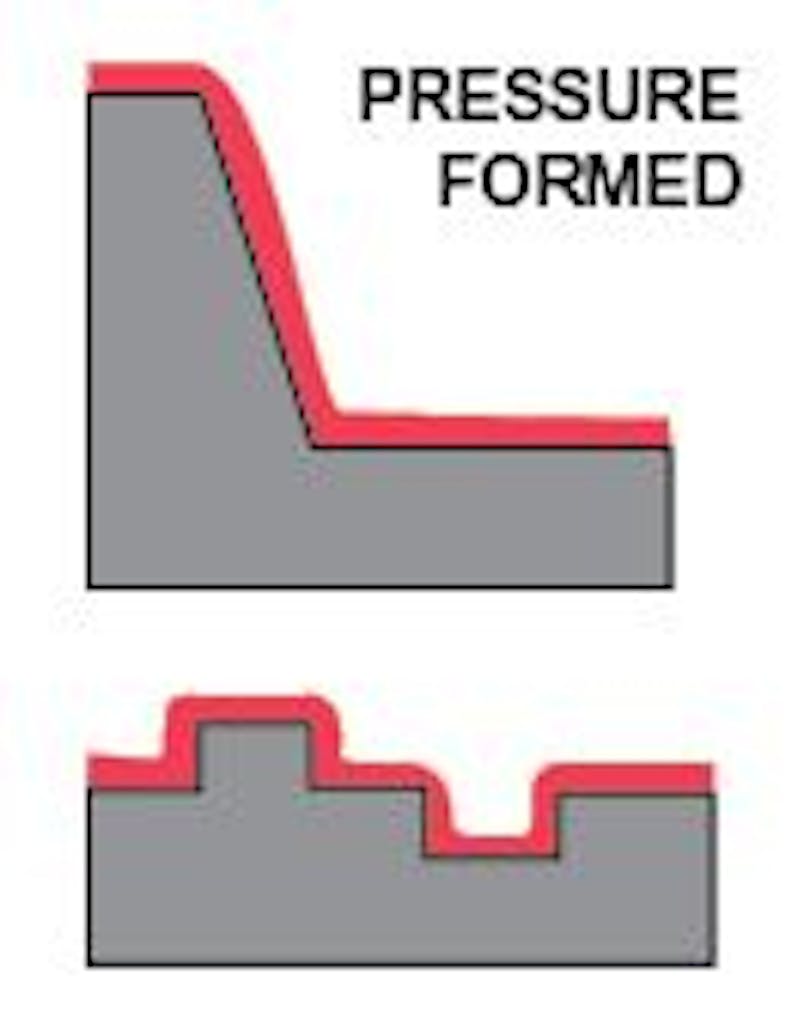
Membrane Pressing
Membrane pressing is used to encase dimensional surfaces in thermoplastics. The thermoplastic sheet is heated and vacuum-formed over the surface. This process allows:
<br>
- Forming around top and side surfaces
- Complex shapes
- Fine details
- Sharp or round corners
- Embossed brand logos
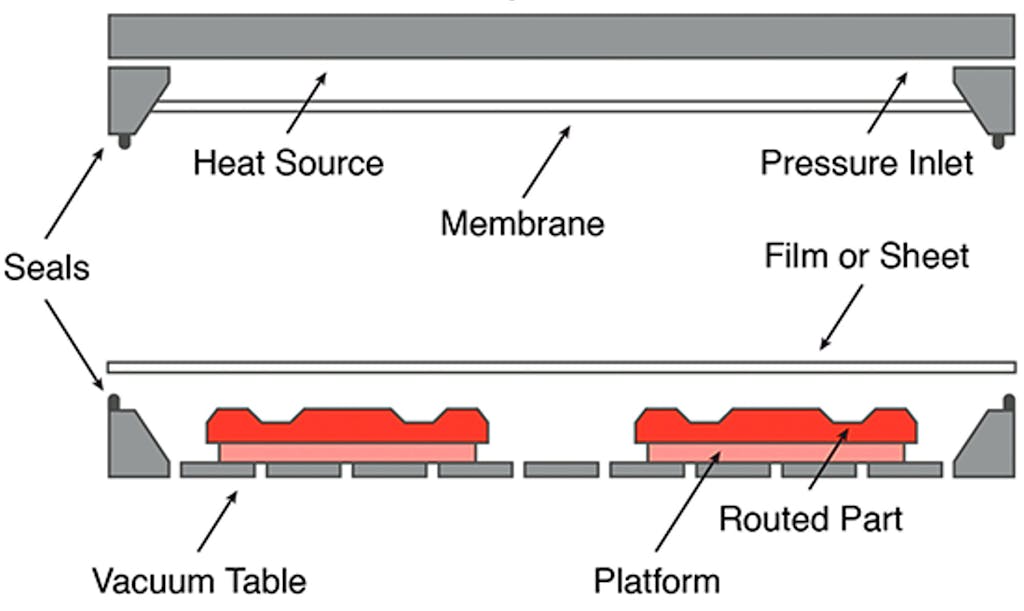
Twin Sheet Forming
The twin-sheet forming process bonds two thermoplastic sheets together to provide additional structural support and rigidity.
This process allows:
<br>
- Improved structural support
- Increased component rigidity
- Ribbing
- Surface details
- Undercuts
- Integrated hardware
- Elimination of secondary assembling
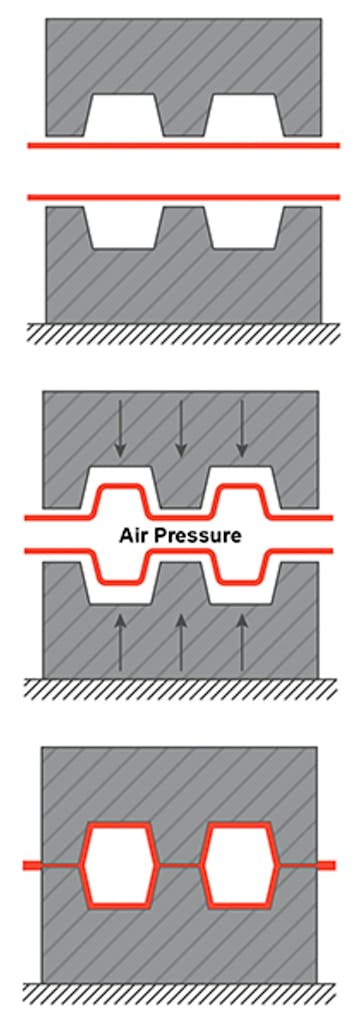
Drape Forming
<br>
Drape forming is best for simple geometries and curvatures and involves heated thermoplastic draped over a mold to create a desired shape, without the use of a vacuum. Material is heated to pliability and then draped over a tool. The tool is then clamped down, allowing the material to take the shape of the tool and cool.
<br>
This process allows:
<br>
- Consistent material thickness throughout the part
- Lower tooling costs
